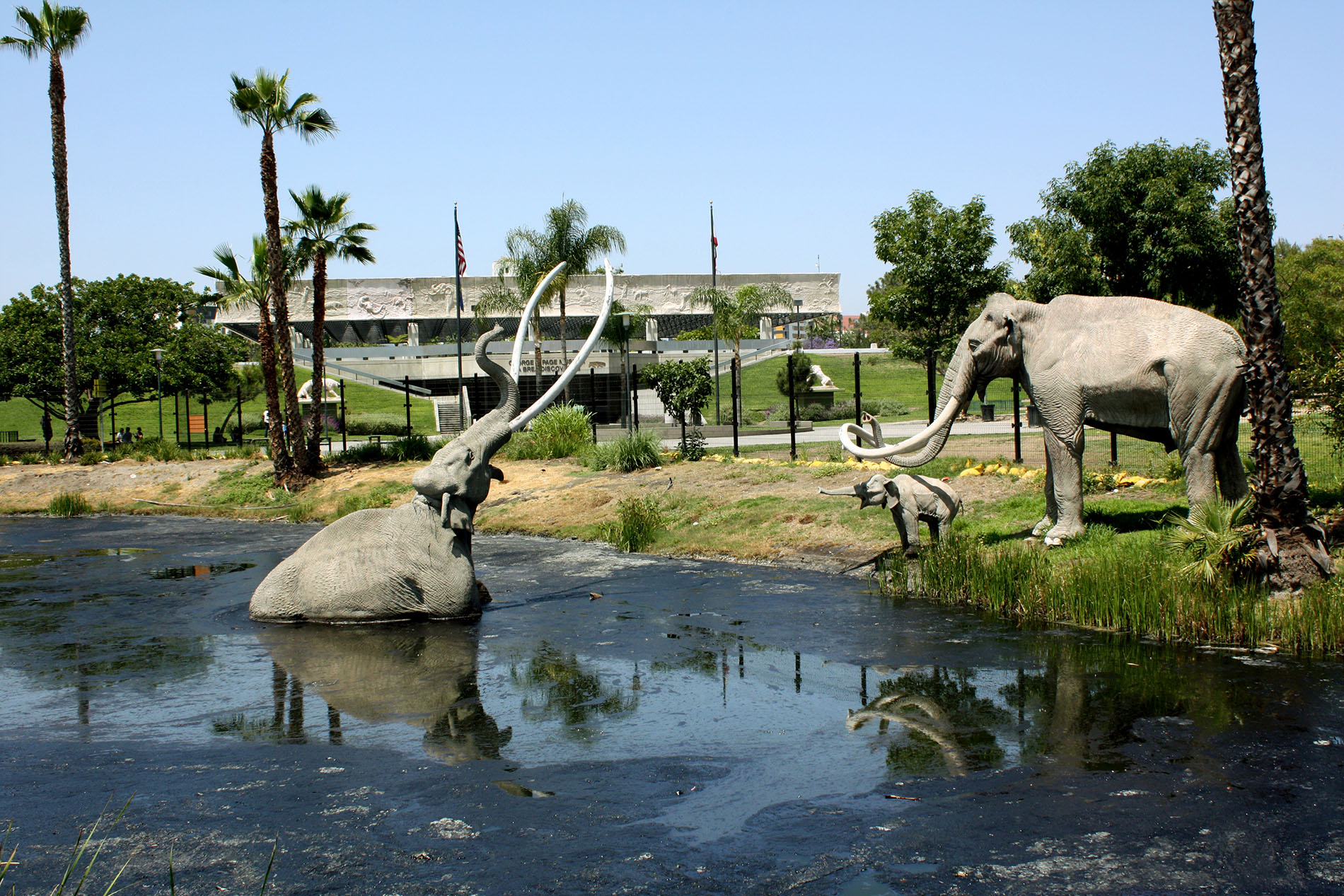The La Brea Tar Pits and Museum is a fascinating site located in Los Angeles, California, that offers a unique glimpse into the prehistoric world. This site is renowned for its rich fossil deposits, which provide invaluable insights into the life of animals and plants from the Ice Age. In this article, we will delve into the history, significance, and attractions of the La Brea Tar Pits, making it a must-visit destination for anyone interested in natural history.
The La Brea Tar Pits are not just a collection of sticky asphalt; they are a significant archaeological site where scientists have uncovered thousands of fossils, including those of mammoths, saber-toothed cats, and a variety of other ancient species. The museum adjacent to the tar pits offers an educational experience that complements the outdoor exhibits, making it a perfect outing for families, students, and history buffs alike.
As we explore the La Brea Tar Pits and Museum, we will look at the science behind the tar pits, the discoveries made over the years, and how this site has contributed to our understanding of prehistoric life. Whether you're a local resident or a tourist, this site promises an engaging and enlightening experience.
Table of Contents
History of La Brea Tar Pits
The history of the La Brea Tar Pits dates back thousands of years, long before the arrival of modern humans. The indigenous people of the area, the Tongva tribe, had a profound connection to the land, utilizing the tar for various purposes, including waterproofing and as a binding agent. The site gained significant attention in the 19th century when fossil remains were first discovered.
The Discovery of Fossils
In 1875, workers digging for asphalt in the area stumbled upon large bones buried in the tar, leading to the first significant excavations. Over the following decades, paleontologists began to realize the site's importance, as it contained a treasure trove of Ice Age fossils. This led to the establishment of the La Brea Tar Pits as a protected site for scientific research.
Geology and Formation of the Tar Pits
The La Brea Tar Pits are formed from natural asphalt seepage, which occurs when crude oil rises to the surface and evaporates, leaving behind a thick, sticky substance. This geological phenomenon is known as "asphaltum," and it has been formed over millions of years.
How Tar Pits are Created
- Crude oil from deep underground reservoirs rises to the surface.
- The lighter components of the oil evaporate, leaving behind a thick tar.
- Over time, rainwater and other natural elements can mix with the tar, creating pools.
Fossils Found at La Brea Tar Pits
One of the most exciting aspects of the La Brea Tar Pits is the incredible variety of fossils that have been discovered. Thousands of specimens have been unearthed, providing a snapshot of the ecosystem that existed in the area during the last Ice Age.
Diverse Species Unearthed
Some of the notable fossils found at the site include:
- Mammoths
- Saber-toothed cats
- Giant ground sloths
- Dire wolves
- Various species of birds and reptiles
These findings have contributed significantly to our understanding of the biodiversity and ecological dynamics of the prehistoric era.
La Brea Tar Pits Museum
The La Brea Tar Pits Museum is the perfect complement to the outdoor exhibits, providing visitors with an in-depth look at the science behind the fossils and the history of the tar pits. It features interactive displays, life-sized replicas of prehistoric creatures, and informative exhibits detailing the excavation process.
Exhibits and Attractions
Some of the key attractions within the museum include:
- The Fossil Lab, where visitors can observe paleontologists at work.
- Life-sized models of Ice Age animals.
- Educational exhibits about the tar pits' formation and fossilization process.
Ongoing Research and Excavation
Research at the La Brea Tar Pits is ongoing, with excavations conducted regularly. Scientists continue to unearth new fossils and study the existing collections to gain a better understanding of prehistoric life.
Importance of Ongoing Studies
These studies are crucial for several reasons:
- They help scientists understand the climatic conditions of the past.
- They provide insights into extinction events and evolutionary processes.
- They foster public interest in paleontology and natural history.
Visiting La Brea Tar Pits and Museum
For those planning to visit the La Brea Tar Pits and Museum, there are several things to keep in mind to make the most of your experience:
Visitor Information
- Location: 5801 Wilshire Blvd, Los Angeles, CA 90036.
- Hours: Open daily from 9:30 AM to 5:00 PM; closed on certain holidays.
- Admission Fees: Vary for adults, children, and seniors; discounts available for groups.
Educational Programs at the Museum
The La Brea Tar Pits Museum offers various educational programs aimed at different age groups, enhancing the learning experience for visitors.
Programs Offered
- Guided tours for schools and groups.
- Workshops for children and families.
- Lectures and presentations by experts in paleontology.
Conclusion
In conclusion, the La Brea Tar Pits and Museum provide an unparalleled opportunity to explore the prehistoric past. With its rich fossil deposits and dedicated research efforts, this site continues to be a vital resource for scientists and a fascinating destination for visitors. We encourage you to plan your visit and experience the wonders of this remarkable site for yourself!
If you enjoyed this article, please leave a comment below, share it with your friends, and consider reading more articles on our site about natural history and other intriguing topics.
Thank you for taking the time to explore the La Brea Tar Pits and Museum with us. We look forward to welcoming you back for more exciting content!
Also Read
Article Recommendations



ncG1vNJzZmivp6x7tMHRr6CvmZynsrS71KuanqtemLyue9Oop6edp6h%2BeXvLmmSbqpWWerWt0WanoqyjYq6vsIymrKydpaJ7qcDMpQ%3D%3D